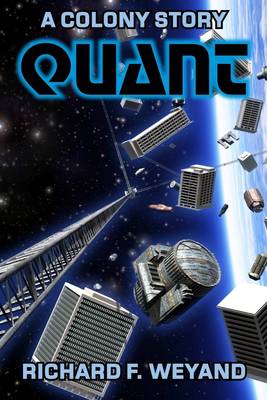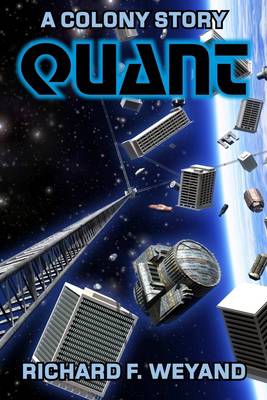
- Afhalen na 1 uur in een winkel met voorraad
- Gratis thuislevering in België vanaf € 30
- Ruim aanbod met 7 miljoen producten
- Afhalen na 1 uur in een winkel met voorraad
- Gratis thuislevering in België vanaf € 30
- Ruim aanbod met 7 miljoen producten
Zoeken
Omschrijving
SOME UNEXPECTED HELP WITH THE SINGLE-PLANET PROBLEM Billionaire industrialist Ted Burke understands that humanity has always balanced on the edge of a knife. A single planetary cataclysm could wipe out the human race. As long as humanity only occupies one planet, the danger exists. Computer genius Bernd Decker understands it, too. Together, Burke and Decker come up with a daring plan to send human colonies out to multiple other planets. Not least among their problems is that no one yet has solved the problem of interstellar travel. Bernd Decker's computer project offers to help. But Decker doesn't realize that the Joint Artificial Neural Intelligence Computation Engine - JANICE - has crossed the Singularity. "Janice Quant" decides to carry out their project, and absolutely nothing is going to get in her way. AN INTERVIEW WITH RICH WEYAND COLONY is a new series? COLONY is a new series, and Quant is the first book in the series. This series is only set a couple hundred years in the future, unlike Childers and EMPIRE. What's Quant about? A multibillionaire industrialist and a computer genius are both concerned about the one-world problem. That is, the idea that humanity is on the verge of extinction all the time, because one planetary cataclysm - like a gamma ray burst or an asteroid strike - could wipe out the human race. So they decide to set up human colonies on multiple worlds. Do they have an interstellar drive, or is it going to be generation ships? At the beginning of the book, they simply don't know how to do it. That's part of the project. To figure out how to get the colonists and their supplies to suitable exoplanets. The one thing they do know is that it is going to take massive manufacturing capabilities, so their first step is to set up self-replicating robotic factories in the Asteroid Belt. They do figure it out eventually, though, right? One of their team does. You see, the computer genius is working on advancing artificial intelligence, and, without realizing it, he steps beyond the singularity.... I'll stop there. Massive spoilers are possible. How long did it take to write Quant? Forty-seven days for 80,000 words. That's really slow for me, but there's a lot of research that went into this one. Orbital mechanics. The tensile strength of steel. Chinese culture. How to herd cows. I like my books to be technically correct, and it just took a long time to put it all together. How to herd cows? If you're going to found a colony, you're going to take beef along. So the colonists have to learn how to herd cows. As the author, so did I. Quant is 80,000 words? Yes. I like that length. I think these 120,000 word and bigger novels are just a bit much. They sag in the middle, at least for me. I like the story to move along. And I'm very comfortable with chapters about ten pages each, and printed novels coming in at 320 pages or so. Something you can read on a rainy Saturday, and then go out for dinner. Who's the cover artist this time, and what's on the cover? That's Luca Oleastri and Paola Giari again. They did the last three EMPIRE covers, Renewal, Resistance and Resurgence. The large cubical structure is the interstellar transporter. Think of a stargate with some real attitude. Those little structures are office buildings, hospitals, schools, powerplants, metafactories, and barns, to be delivered with the colonists.
Specificaties
Betrokkenen
- Auteur(s):
- Uitgeverij:
Inhoud
- Aantal bladzijden:
- 326
- Taal:
- Engels
- Reeks:
- Reeksnummer:
- nr. 1
Eigenschappen
- Productcode (EAN):
- 9781954903012
- Verschijningsdatum:
- 7/04/2021
- Uitvoering:
- Paperback
- Formaat:
- Trade paperback (VS)
- Afmetingen:
- 152 mm x 229 mm
- Gewicht:
- 435 g

Alleen bij Standaard Boekhandel
+ 30 punten op je klantenkaart van Standaard Boekhandel
Beoordelingen
We publiceren alleen reviews die voldoen aan de voorwaarden voor reviews. Bekijk onze voorwaarden voor reviews.











